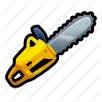10 Simple Tips for Effective Whipper Snipping
Everyone wants a neat and polished lawn. While lawn mowers do the bulk of the grass cutting and trimming, they can’t possibly cover every inch of your backyard. That’s where a whipper snipper comes in. Whipper snippers afford the user a more precise cut, and allow access to sensitive (e.g. around flower beds, new plants) and hard-to-reach places. It’s your go-to tool for giving your walkway a clean edge, tidying up under the deck, and trimming grass along a fence.
Whipper snippers are incredibly useful garden care tools, but they’re also among the most dangerous. The turning head and the plastic string alone can cause serious injury, not to mention the debris and dust flying everywhere. But if you follow our simple safety precautions, you can safely and efficiently operate a whipper snipper without worry.
1 — First thing’s first
Before using a whipper snipper, do some pre-operational due diligence to maximise your safety and performance. Check the weather for the day. If it had just rained or rain is in the forecast, wait for another day. Trimming in wet weather is generally a bad idea. One, you might slip and fall while whipper snipping, injuring you or damaging the snipper. And two, wet grass is more difficult to cut, forcing the whipper snipper to expend more effort which may eventually lead to engine failure.
Do a quick sweep and clear the yard of any small hard objects, wires, or toys that could be thrown by the whipper snipper. Whipper snippers can fling objects up to 40 feet and projectile flying everywhere is a sure recipe for disaster.
If you’re going to operate a whipper snippers near fixed breakable objects such as windows, consider covering them up with plywood while trimming. That simple act could save you from a lot of broken glass later.
2 — Safety first
Always wear safety equipment to give you an extra layer of protection from flying debris. Basic protective gear include: ear muffs, goggles, face shield, heavy-duty work gloves, and long pants and sleeves. Flying sand, gravel, and other debris can inflict injuries not only to you but to bystanders as well.
3 — Situational awareness
Keep a perimeter of at least 50 feet from the nearest person or animal. If possible, have someone to keep guard of the perimeter. Look out for people (especially children) and animals that may be attracted to the sound. Immediately turn off the whipper snipper if you see someone approach or walk by and until they have passed.
4 — Adjust the whipper snipper
Some whipper snipper models come with shoulder straps to help you support the tool’s weight while keeping it at a safe distance, while other snippers have handles that can be adjusted. Either way, make sure you make the correct adjustments for your height so you can safely and comfortably trim with a whipper snipper.
5 — Not too fast, not too furious
Set the whipper snipper’s throttle just high enough for sufficient cutting performance. Running the snipper faster will lead to more noise and vibration without extra benefit, and a shorter line lifespan. Mid to mid-high throttle is sufficient for most whipper snipping. Reserve the full throttle setting for clearing hardy brush.
6 — Tap, tap, tap
Tap your whipper snipper head lightly on grass or soft soil to bring out more trimmer line. Repeated tapping on hard surfaces such as concrete and asphalt wear down the snipper head more quickly and can even damage it.
Each tap gives you around 2 inches of new trimmer line and that’s enough to extend your trimming session. Do not tap the head more than once as it will release more line than that is needed and a blade in the cutting shield will just cut the excess line.
7 — Equip the right line
Restock the whipper snipper head only with the type of trimmer line stated in the user’s manual. Trimmer lines that are too thin or thick don’t feed properly through the holes the whipper snipper. Do not use metal wire, rope, or string for cutting. They don’t work as well and wear out faster.
8 — One direction
The heads of most whipper snippers spin from right to left, so you’d get optimal trimming results when your swing the whipper snipper in the same direction. If unsure about which direction your whipper snipper turns, watch the trimmer line at low speed.
9 — Top to bottom
Do not attempt to cut tall plants in one go. When cutting or trimming tall grasses or weeds, use short strokes to cut from the top of the plant and then work your way down to the ground.
10 — Grass only
Whipper snippers are designed specifically to cut grass, and only grass. Do not use a whipper snipper to trim down plants with thick stalks. Using a whipper snipper to cut anything thicker and hardier than grass could cause it to stall as leaves and other detritus start to get tangled in the trimmer line.
Conclusion
Millions of people all over the world have realized that whipper snippers are the answer to a clean-cut garden and lawn for your home. Its relatively small size and easy operation can lull people into thinking it’s a harmless tool, but as you should know by now, that is not the case. Whipper snippers can be dangerous in the hands of the negligent and the untrained. These tips and are here to help you a safe time with your whipper snipper.
